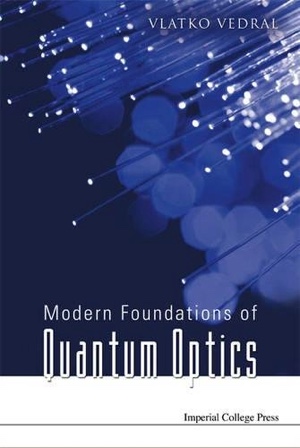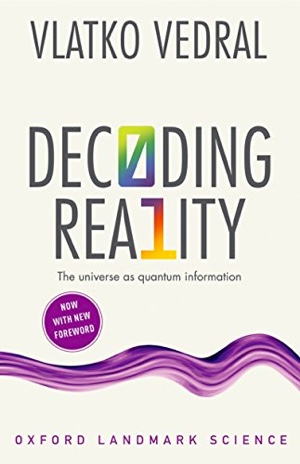Quantum Time and Cloning
I’ve recently been busy finalising a big review (300 plus references), together with Chiara Marletto, on Quantum Information methods applied to detecting quantum effects in gravity. It’s a hot topic and I’ll tell you more about it on a separate occasion. I’ve also been swamped with requests to look into some ideas that have suddenly become fashionable in the world of investors (for reasons that completely escape me). This too is probably a topic for a separate blog, however, by the time I get to it, the ideas themselves may no longer be the focus of the techy world. My finger is, in any case, not on the pulse of the industrial applications of quantum technologies.
I’d like to instead return to one of the most fascinating topics for a physicist – and not just a physicist. No, it’s not Artificial Intelligence (most physicists find that boring as it’s just basically improving our search engines – no intelligence involved at all), it’s actually the notion of time. The fourth century religious philosopher St. Augustine famously said that he had a perfectly fine intuitive understanding of time until someone asked him to elaborate on it, after which he realised that he didn’t really understand time at all.
In physics time is just a one-dimensional parameter. It’s a number designating when something happened. It comes packaged with the three-dimensional space and – together – they serve as a “background coordinate frame” in which all of the known physics takes place.
When we describe say an interaction between two particles, we use 3 spatial and 1 temporal coordinate to mark where and when the interaction took place. So far so good. Einstein’s special relativity made the spacetime coordinates dependent on the speed of observers. So, if I use one frame of reference, another person moving with respect to me, has to change it in order for us to agree on all the physics that we observe.
This is radical, but not as radical as General Relativity. In Special relativity spacetime is still immutable. It is the arena in which everything else takes place, but it does not get disturbed by any of the happenings – it’s the unmoved mover. In General Relativity instead, spacetime changes because it gets affected by particles and fields as well as in turn affecting the particles and fields themselves (this is Einstein’s implementation of Newton’s action and reaction when it comes to spacetime).
All of this is so far true classically speaking. And Einstein’s relativity, both the special and general, are in fact classical theories. The trouble comes when spacetime has to respond to quantum particles and fields. If a massive object is in a superposition of two different places at the same time, then the spacetime ought to be able to respond in each of these locations simultaneously. But does it? We don’t know. This is one of the biggest open problems in physics at present.
One possibility is that spacetime itself is quantum. Another possibility is that the gravitational fields are quantum, but they still exist on a classical background spacetime grid, which is there as in Special Relativity (and the rest of physics) just to provide a convenient coordinate system.
But even tough time and space are treated together in all these approaches, time is still different to space. Namely, the way we do physics is almost always invariably like this. We first write the state of the system – particles or fields – existing at different spatial points but at one time and then we apply the dynamical equations of motion to calculate the state at a later time. That’s it. So, the system is specified for all space and at one time and then evolved in time to obtain the new state throughout all space.
A while back I went against this logic and suggested that states of physical systems could be written not just across space but also across time. In quantum physics this has a very interesting consequence that not only can different particles be entangled to one another in space, a single particle at one time could also be quantum entangled to itself at a later (or earlier) time.
In my PhD I introduced a novel way of quantifying spatial entanglement that has now become widespread. However, a few weeks ago, I completed an exciting joint research project with James Fullwood and a couple of his colleagues, investigating how to quantify entanglement in time. We basically used one of the spatial measures of correlation – the mutual information, introduced by Shannon – and applied it to time.
There is a problem here that arises precisely from the fact that “time is not space”. In space, we cannot clone quantum systems. Namely, if we have one quantum system in an unknown state and want to imprint that state onto another system while retaining the original state of the first system, this is not possible. One of the defining features of quantum information is that it cannot be cloned in this way. Once we treat states in time the same way as we treat them in space, however, we find out that, if nothing happens between two times, then the states pertaining to them (the two times) are clones of one another.
This is only natural. A state at the first time becomes the same at the second time if there is no dynamics in-between. This, however, has a funny consequence (as in weird, not as in haha) in that what one would normally call a probability to make a particular measurement on spatially entangled qubits, now becomes a negative number in time. The fact that negative probabilities arise when using the spatial structure in time is because time is – after all – not the same as space!
But, since the mutual information is based on taking logarithms of probabilities, having a negative probability presents us with a problem. What is the log of a negative number? It certainly cannot be a real number, which therefore makes it difficult to use it to quantify temporal entanglement (entanglement, being a form of correlation, cannot be negative or imaginary).
Here, James had a great idea. Why not take the absolute value of these numbers and convert them into positive numbers? And this is not just an ad hoc suggestion as we found out through our collaboration; the resulting mutual information in time has many intuitively pleasing properties. For starters, it provides us with a way of measuring the capacity for communicating in time (such as when we input a program into our computer and then read out the result sometime later). Secondly, the states that we expect to be entangled in time indeed have non-zero values according to this measure, while the ones that are not, give us zero temporal mutual information.
One thing that is different between the spatial and temporal mutual information is that the former cannot increase by local operations whereas the latter one can. This is a direct consequence of the fact that correlations in time are fundamentally different from the correlations in space. If two systems occupy different spatial locations, then disturbing one of them cannot instantaneously affect the other. This is known as “locality” and I’ve written much about the fact that it plays a central role in modern physics. But, in time, disturbing one and the same system initially certainly has an effect on its later states. Hence: no locality in time. This does unfortunately imply that many of the things I found out in my thesis about spatial entanglement cannot easily be applied to time.
The one-million-dollar question, however, is: how does this relate to quantum gravity? Well, my hope is that once we understand how to write quantum states of systems in spacetime, we will also be able to apply a similar logic to spacetime itself. Imagine if the same Heisenberg uncertainty applied to space and time as it does to the position and momentum of particles. You tell your friend to meet you at 8pm at the Piccadilly Circus. And you are there waiting, but your friend is nowhere to be seen. You give him a call to check what’s up only to hear him say “Oh, I thought you said at the Piccadilly Circus at 8pm. Not at 8pm at the Piccadilly Circus. It’s not the same!”
Then physical systems would be seen as quantum states in quantum spacetimes and Einstein’s equations of General Relativity would inform us how they (the systems and spacetime) affect one another (albeit, this time, as quantum objects). You’d then have no trouble meeting your friends. But, possibly more importantly, is this a possible road to quantum gravity? Only time will tell.
Sign up to my substack
BOOKS
ASK ME ANYTHING!
If you'd like to ask me a question or discuss my research then please get in touch.






